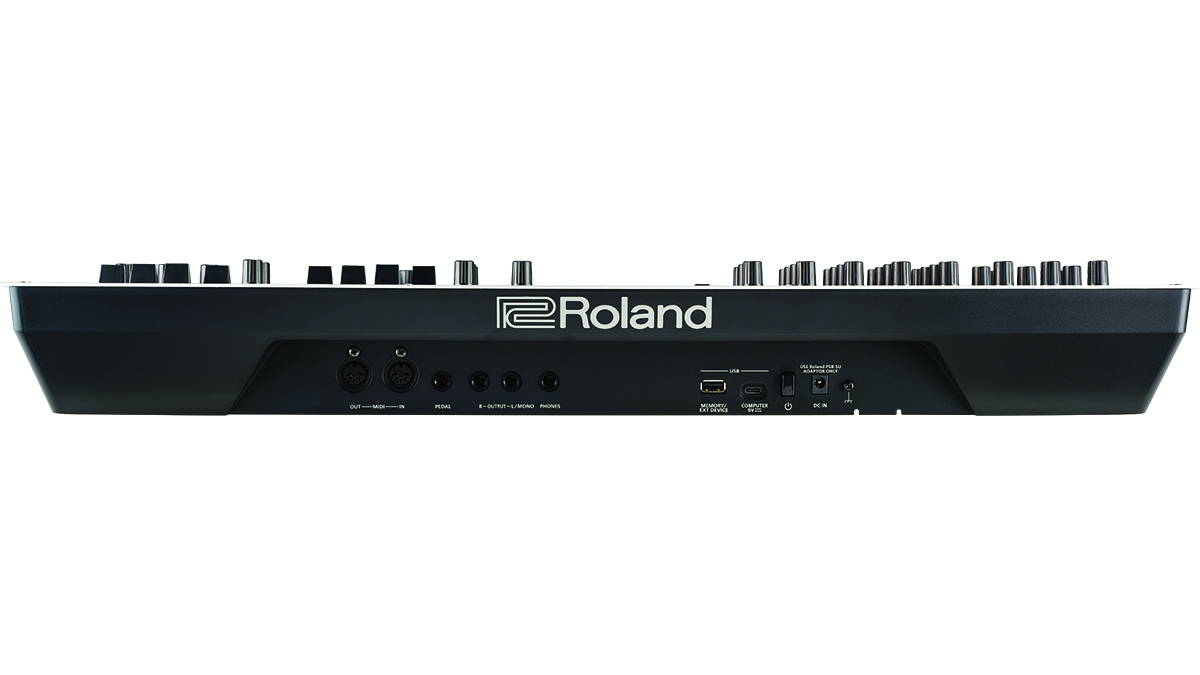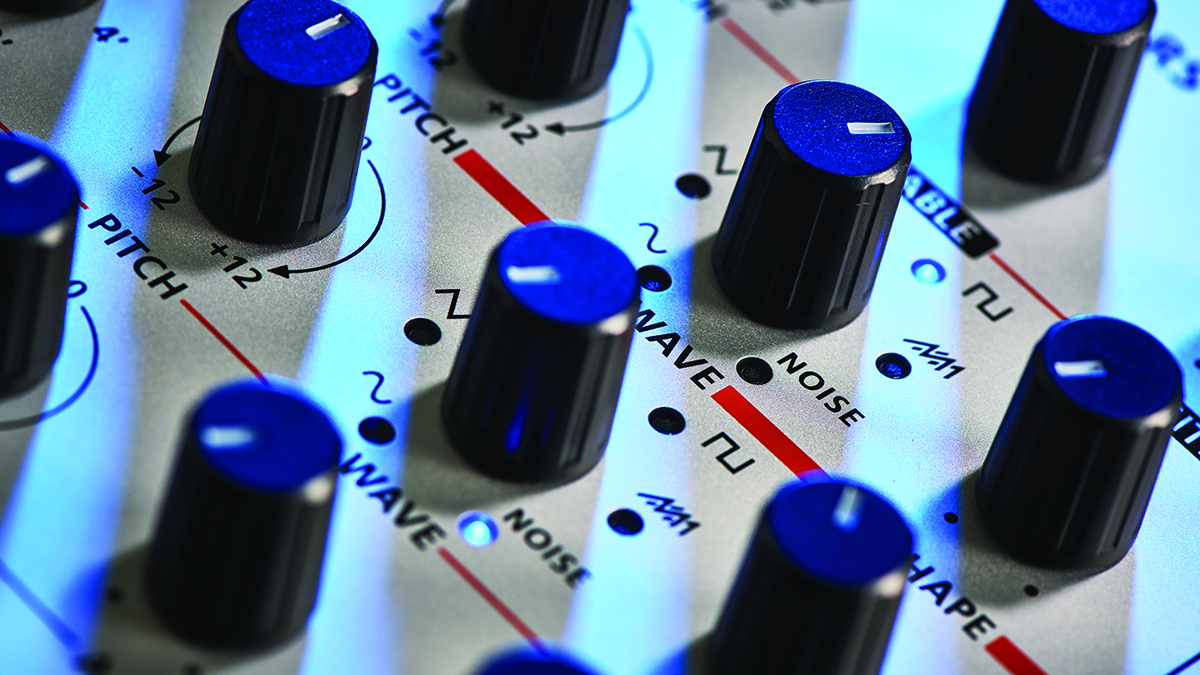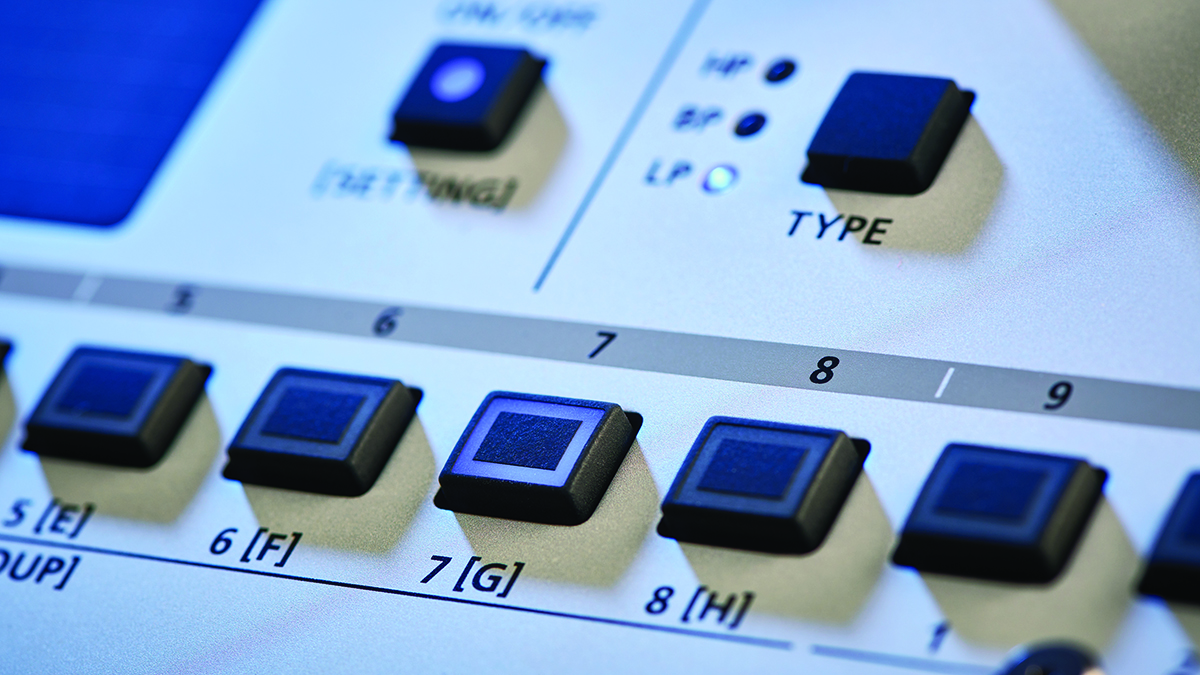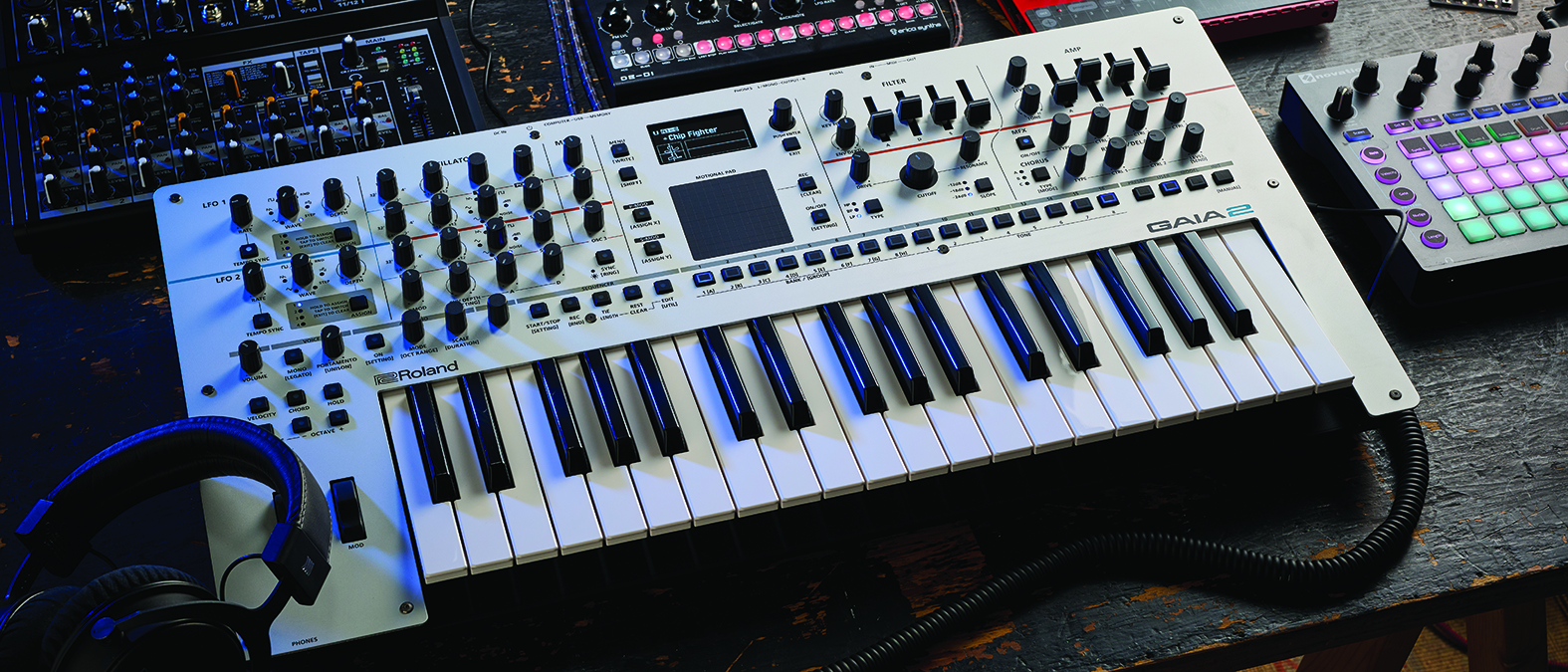MusicRadar Verdict
Gaia 2 has some neat tricks, but it’s not cheap, and neither its sound nor feature set are up there with the best of its rivals.
Pros
- +
Hands-on interface keeps most parameters up-front.
- +
Motional Pad is capable of some fun modulation tricks.
- +
Comes equipped with a virtual SH-101 onboard.
Cons
- -
Some virtual analogue elements sound weak... even compared to its own Model Expansion.
- -
Some of the presets feel more like feature demos rather than usable sounds.
- -
A proper mod matrix would open up more modulation options.
MusicRadar's got your back
Roland Gaia 2: What is it?
Roland’s original Gaia arrived in 2010, at the tail end of a virtual analogue boom. It was highly praised by us (and others) at the time for its convincing VA sound and hands-on interface.
Within three years of its release though, the likes of the Volcas and MiniBrute would usher in a new wave of affordable analogue that made ‘faux’ analogue synths look decidedly old hat.
If Gaia was a synth of its time, Gaia 2 looks as if it’s teleported in from a whole other era. The silver colour scheme, plastic controls and basic OLED screen have a distinctly turn-of-the-millennium vibe, with a touch of Korg Minilogue thrown in for good measure. Even its central ‘Motional’ expression pad looks like a relic from an era when Kaoss Pads were all the rage. We don’t hate the look of it, but it feels retro without referencing any one vintage synth.

The feel of the synth itself is a bit of a mixed bag. Gaia 2 is surprisingly lightweight for a synth of its size – betraying its all-digital design – but the aluminium faceplate feels solid and the 37 full-sized keys feel nice to play. It’s a shame the quality doesn’t carry over to the controls, which are fine, but rather small, plasticky and occasionally a little loose feeling. The pitch and mod wheels to the left of the keyboard are oddly small too, meaning there’s not much travel for expression.


Roland Gaia 2: Performance and verdict
One of the key selling points of the original Gaia was its emphasis on hands-on control, and that’s true of this follow-up too. The synth engine itself is a relatively simple subtractive design, but that allows for almost every element to be accessed via its own front panel control or an uncomplicated button press. In that way, what you see on the Gaia’s front panel is largely what you get: three oscillators, a mixer section, a single multimode filter, amp and filter envelopes, two LFOs and a three-part effect section.

• Korg Minilogue XD
Korg’s second gen Minilogue similarly mixes (non-virtual) analogue and digital oscillators.
• Korg Modwave
With its wavetable oscillators and touchpad, Modwave is probably Gaia 2’s closest rival. Korg’s synth goes deeper on the digital sounds though, and currently sells for £200 cheaper.
• ASM Hydrasynth Explorer
ASM’s budget-friendly version of the Hydrasynth walks a nice line between faux-analogue and some interesting wavetable features.
There are a few significant ways in which Gaia 2 modernises the design of its predecessor. The most notable is the addition of a wavetable oscillator alongside the two virtual analogue ones. This comes stocked with 63 tables. There are rotary controls for coarse and fine tuning, wavetable selection and position. The wavetable oscillator can also be processed via either phase modulation or waveshaping, both of which are controlled by the touchpad (these are an either/or option, so there’s no way to engage both simultaneously).
The two VA oscillators are identical, offering sine, triangle, saw, square, supersaw and noise waves. Both also have shape parameters for further adjusting each wave. At the bottom of the oscillator section sits a row of modulation controls that can engage cross-modulation between the VA oscillators, as well as sync and ring mod. There’s also a simple A/D envelope here that can be routed to either global oscillator pitch, Osc 1 wavetable position, Osc 2 shape, Osc 3 shape or one of Osc 1’s phase modulation or shaper parameters. It’s a shame, however, that only one of these routing options is available at any one time.
Want all the hottest music and gear news, reviews, deals, features and more, direct to your inbox? Sign up here.
Gaia 2’s filter has high-, low- and band-pass modes, plus 12dB, 18dB and 24dB slope options. There are also Drive and Resonance controls here, which flank the central cutoff knob. Sonically, it’s not the most characterful filter, although Roland has already improved it somewhat with a firmware update – when we first got our hands on Gaia 2, the filter sounded woefully thin, although it's now decent sounding, if not hugely inspiring.
The effect section fares far better though. This is divided into three blocks. MFX houses a multitude of processors ranging from EQ and compression through a variety of delays, enhancers, modulation effects, distortion, additional filters and more. Below is a unit with seven reverb and delay varieties. These are joined by a three-mode emulation of the classic Juno chorus.
There are lots of vintage-inspired effects, including models of classic Roland hardware. Although these are largely recycled – similar options can be found in pretty much any recent bit of Roland hardware – they offer a vast array of options and can really bring synth patches to life.

All mod cons
Gaia 2’s two LFOs are identical. Each has six wave options, offering triangle, saw, square, random and sample & hold modes. The final LFO mode is a custom ‘step’ mode, which allows users to define their own LFO shapes using a 16-step wave sequencer. Each LFO can be synced to host tempo, and has four routing slots that can be used to apply modulation to most, but not all, front panel controls. It’s possible to modulate the rate of one LFO from the other, which can be fun, but it’s a shame you can’t modulate the depth of another routing.
Gaia 2’s signature modulation tool is its central ‘Motional’ pad. This is an X/Y touchpad that’s used for a few different tasks. As mentioned above, it’s used to set and adjust parameters for oscillator 1’s phase modulation and waveshaping effects. It can be used as a more general modulation tool too, allowing users to assign a single parameter to each of the X and Y axes.
As well as allowing for ‘live’ modulation, the Motional Pad can also record, allowing users to draw two-dimensional modulation shapes, which can be set to free run or be retriggered with each new note press. It’s a neat trick, and allows for some great movement possibilities that work particularly well for pads and drone patches. That said, some of the stock presets lean into this feature a little too hard, with elaborate modulation patterns that feel more like a demo to show off the feature than a usable synth sound.
Our main gripe when it comes to modulation is the lack of a proper mod matrix. While there are plenty of modulation options, it leaves significant gaps, such as no ability to route the envelopes beyond their preset destinations. We imagine Roland aimed to keep modulation simple and up-front – routing the LFOs and pad axis is a pleasantly simple process – but Arturia’s excellent Mini/MicroFreak synths offer great examples of how mod-matrixes need not mean endless menu diving.

Gaia 2 has a few more tricks up its sleeve. Firstly there’s a capable, if slightly fiddly sequencer, offering poly sequencing and parameter motion recording, plus an arp. There’s a nice Chord mode too, which is great for Detroit-style stabs.
Finally, like many recent Roland releases, Gaia can also expand its sound engine via ‘Model Expansions’, which are sound packs based on emulations of vintage Roland gear. Gaia 2 ships with an SH-101 emulation in its Model slot. Switching over offers a varied range of 101-style presets, but also changes the functionality of many of the controls to match its vintage inspiration. Osc 1 becomes a sub oscillator, for example, while Oscs 2 and 3 become 101-style saw and pulse oscillators respectively.
The 101 model also changes the filter, with the Gaia’s HP, LP and BP modes being replaced by three ‘vintage’ varieties. What irks us about this, however, is that these 101 filters sound nicer and offer more variety than the filter in the synth’s sound engine, and it’s a little infuriating not to have access to those modes within the rest of Gaia.

Those little extras…
Although Gaia 2’s design is not without issues, it includes a fair few nice touches too. On the connectivity front, like other contemporary Roland releases, it can connect to a computer or mobile device as a class-compliant audio interface to stream audio directly to your DAW. It’s designed to work tightly with Roland’s Cloud subscription service too, which will let users browse and upload additional expansions. With the addition of Roland’s wireless dongle (sold separately) users can even access these over wi-fi.
Sticking to connectivity, Gaia also has a USB port where users can connect a flash drive to store and share patches and sound content. In another nice touch, there are headphone ports on both the front and rear panels, making it easy to plug in without fiddling around with unseen jack ports.
The two virtual analogue oscillators also have a Noise mode that features a variety of interesting sampled textures, although this feature is somewhat buried and easy to miss.
Finally, Gaia’s oscilloscope is great for visualising the way modulation affects the output waveform.
Gaia 2 sounds best when leaning into heavily modulated digital tones
Gaia is not without flaws then. We also wonder who exactly its target audience is. Roland states that its layout makes a great tool for learning synthesis, which we won’t argue with, but at almost £800 this is nobody’s first synth. There are better virtual analogue synths at that price (in fact, the 101 emulation within Gaia is a nicer VA synth than its own engine). Gaia 2 sounds best when leaning into modulated digital tones, but Korg’s Opsix/Modwave or ASM’s Hydrasynth do these better too.
That said, there are undoubtedly things to love here – the hands-on workflow, the effects, the fun Motional Pad. It’s capable of some genuinely lovely sounds too, albeit more limited in scope than some of its direct rivals.
We're sure Gaia 2 will find some fans. But we’d argue there are better and more interesting synths out there at this price.
MusicRadar verdict: Gaia 2 has some neat tricks, but it’s not cheap, and neither its sound nor feature set are up there with the best of its rivals.
Roland Gaia 2: The web says
"GAIA 2 is a great synthesizer for beginners and advanced users who do not yet have hardware sound generators in their studio."
Gearnews.com
Roland Gaia 2: Hands-on demos
MusicRadar
RolandChannel
loopop
Andertons Synths, Keys and Tech
Rachel K Collier
Roland Gaia 2: Specifications
- KEY FEATURES: 22-voice digital synthesiser with wavetable and virtual analogue oscillators. MFX with 53 effect types plus dedicated reverb and chorus. Step sequencer with real-time, step recording and parameter automation. Class-compliant USB-C port for communicating with computers and mobile devices. Support for Model Expansions and other content on Roland Cloud (SH-101 Model Expansion pre-installed).
- CONTACT: Roland
I'm the Managing Editor of Music Technology at MusicRadar and former Editor-in-Chief of Future Music, Computer Music and Electronic Musician. I've been messing around with music tech in various forms for over two decades. I've also spent the last 10 years forgetting how to play guitar. Find me in the chillout room at raves complaining that it's past my bedtime.
